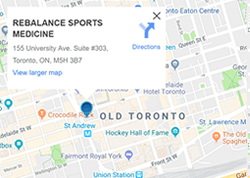Are You Texting Your Way To Neck Or Back Pain?
 Are you currently reading this in a slumped position with your head down, shoulders hunched, arms bent and fingers tapping away at the screen? You are not alone. Smartphones are becoming increasingly common and too many of us spend our days with our heads slumped forward while texting and checking emails. The success of social media has lead to an epidemic of “poor smartphone posture”, and our society has gotten into the bad habit of spending a much greater amount of time in a flexed position – including using computers, watching television, and driving.
Are you currently reading this in a slumped position with your head down, shoulders hunched, arms bent and fingers tapping away at the screen? You are not alone. Smartphones are becoming increasingly common and too many of us spend our days with our heads slumped forward while texting and checking emails. The success of social media has lead to an epidemic of “poor smartphone posture”, and our society has gotten into the bad habit of spending a much greater amount of time in a flexed position – including using computers, watching television, and driving.
As mothers used to say: “Be careful or it might stay like that!”
The average adult head weighs 10 to 12 pounds when it is in the upright or neutral position. According to a study by New York spine surgeon Dr. Kenneth Hansraj, the pressure and weight on your neck and spine increases dramatically as you bend your head down due to the gravitational pull. As shown in the illustration below, tilting your head forward by 15 degrees places 27 pounds of pressure on your spine; 30 degrees of neck flexion adds 40 pounds of pressure; 45 degrees of neck flexion adds 49 pounds of pressure; and tilting your head by 60 degrees places 60 pounds of pressure on your spine! A forward head posture and loss of the natural curve of the spine places a lot of pressure on our joints. Frequent slouching or hunched over positions can permanently change the natural curves of your spine, which can result in neck and back pain. Poor posture is also linked to many medical problems, including headaches, muscle strains, and early degenerative changes of the spine.

How can you fix posture-related problems?
Be aware of your posture and utilize proper body mechanics to help prevent neck or back pain before it begins! Good posture keeps your bones and joints in proper alignment to prevent backache and muscular pain, and increases the flexibility and stress tolerance of your spine. In addition, proper alignment of your spine allows your body to work more efficiently by using less energy for daily tasks.
Good posture is:
- Standing/sitting upright with ears aligned with shoulders.
- Shoulders are retracted (back and down).
- Spine is in neutral position.
- Abdomen is braced.
Tips on how to avoid “poor smartphone posture”:
- Bring your phone to eye level and maintain a neutral spine.
- Avoid tilting your head down to look at your phone.
- Change positions frequently and take breaks every 20 or 30 minutes.
- Stretch and strengthen your neck, back, and core muscles.
Contact our experienced chiropractors or physiotherapists if you are suffering from any symptoms related to “poor smartphone posture”, and would like to learn more on how to correct your posture!
Rebalance Toronto
Rebalance Sports Medicine is a multidisciplinary clinic in downtown Toronto offering physiotherapy, chiropractic, registered massage therapy, sports medicine, naturopathy, Pilates and more.



 What to Expect From Your First Physiotherapy Visit
What to Expect From Your First Physiotherapy Visit The Benefits of Fascial Stretch Therapy [Demo]
The Benefits of Fascial Stretch Therapy [Demo] How Does Physiotherapy Work?
How Does Physiotherapy Work? Best Exercises for Low Back Pain
Best Exercises for Low Back Pain